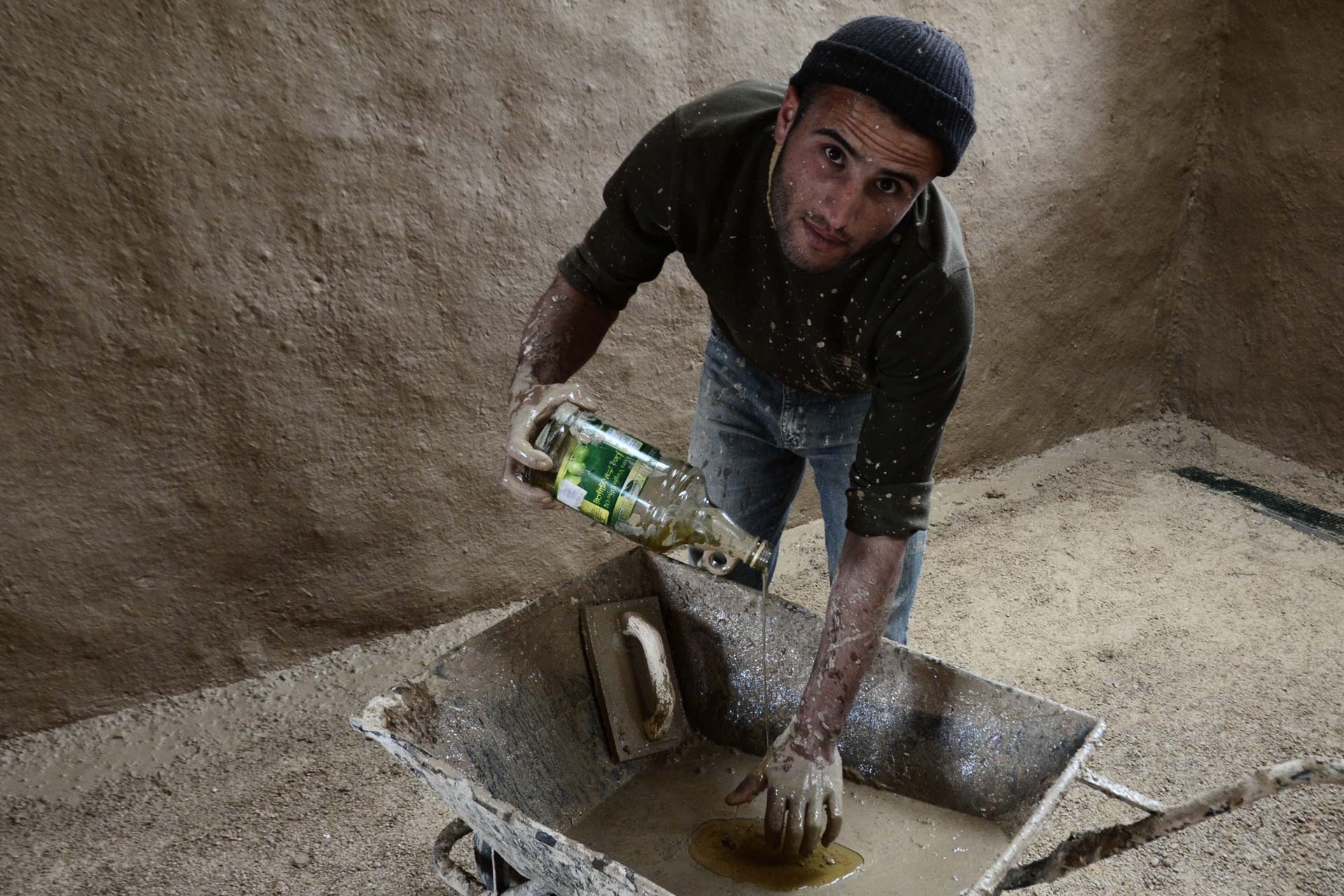Nasma School for Refugees, Bourj Qalaway, Lebanon

To address the absence of educational opportunities available to Syrian refugee children in Lebanon, Najjar Najjar Architects, Transsolar and Lebanese youth-oriented NGO SAWA proposed to develop low-cost climate-responsive schools providing adequate conditions for learning. Syrian children who attend classes are confronted with a poor learning environment, lacking the basic amenities and unprotected from the elements. Many classes are held in tents or temporary structures which offer insufficient lighting, inadequate ventilation, and poor sound insulation.
The interdisciplinary team proposed a pilot project applying climate-responsive design strategies to develop a model alternative refugee school that provides Syrian children with supportive learning conditions. The temporary structure has a life span of up to five years and and was built under the lead of the Transsolar Academy fellow Ahmad Nouraldeen after his return to the Lebanon. » Building process
The Bekaa Valley is an inland plateau, situated at 1,000 meters above sea level. It is sandwiched between the Lebanon and Anti Lebanon mountain ranges and is drier than the rest of Lebanon with more pronounced weather extremes. Summers are very hot, while winter snowfall is frequent and can be deep. Such extreme conditions require that architects and engineers consider a wide variety of low-cost, smart-design solutions.
The construction, configuration and orientation of the classroom follows climate-responsive design strategies and uses passive systems to optimize interior conditions. Exterior walls are made of stacked-earth bags assembled on site and braced by eco-beams. This provides sufficient thermal mass to regulate the impact of the widely varying weather conditions. The timber roof follows the eco-beams grid and is covered by thatch for insulation covered by metal sheets. The building will leave no footprint on the site when disassembled.
The ventilation of the classrooms is provided through earth ducts that allow fresh air to enter the structure after being cooled by the lower temperature of the ground through which the air has traveled. Stale air will be exhausted through roof vents. The shape and orientation of the vents with sun-absorbing panels creating a chimney effect, accelerate the airflow, providing the classrooms with cross ventilation. A translucent panel is attached to the opening to have enough daylight from the north.
The project involved refugees in the construction process in order to give them a sense of ownership. After the structure was up and running and school was in session, the architects and engineers followed up with the collection of data during the various seasons. The findings of this research were applied to subsequent student building projects refining the efficiency. In addition, the smart-design strategies used for this pilot project were proposed to the government for constructing energy-efficient, sustainable structures for other refugee facilities.
Read the detailed paper from the American University of Beirut by K. Najjar, B. Madi, A. Nouraldeen.
The Ghata project started to built schools in 2013, but has readapted the design of their movable schools following the guidelines and principles taken from the Nasma school unit and prototype.





